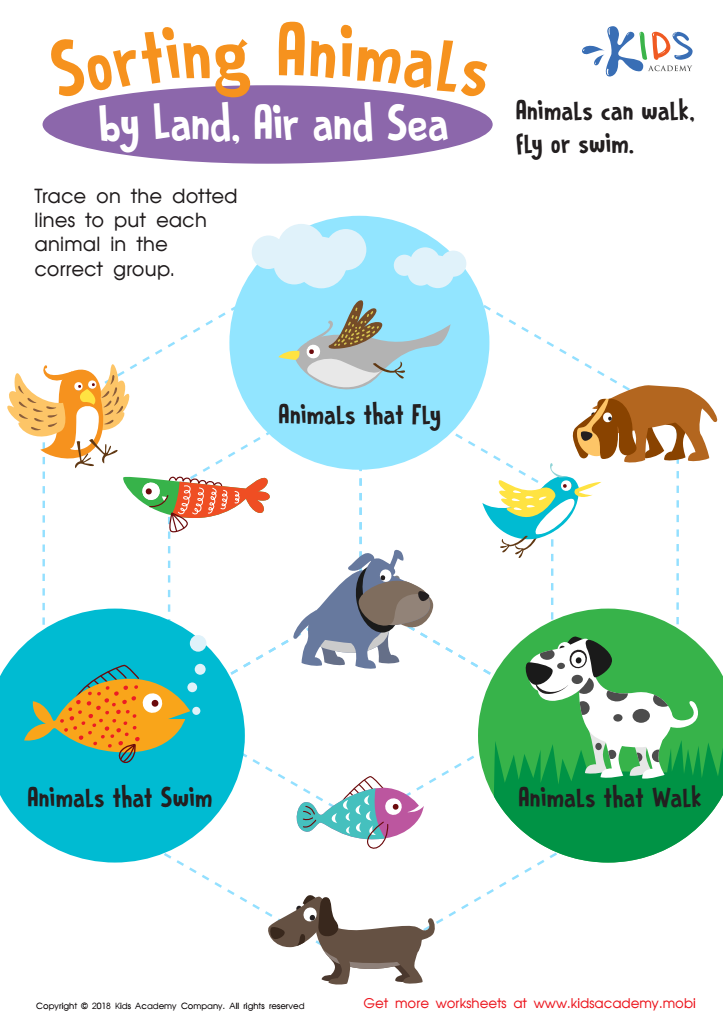Understanding habitats Worksheets for Ages 3-4
6 filtered results
-
From - To
Explore the enchanting world of habitats with our engaging "Understanding Habitats Worksheets" designed specifically for ages 3-4. These worksheets make learning about different environments fun and interactive, helping young learners discover the unique features of forests, oceans, deserts, and more. Through colorful illustrations and simple activities, children will enhance their observation skills, boost vocabulary, and develop a basic understanding of wildlife and plant life within each habitat. Perfect for at-home learning or classroom activities, these printables offer an exciting way for little ones to connect with nature while developing essential early learning skills. Dive into the adventure of habitats today!


Is this a Home? Worksheet


Sorting Animals Worksheet


Where Do We Sleep Worksheet


Land or Water Worksheet


Sorting Animals by Land, Air and Sea Worksheet


Sorting Animals on the Farm Worksheet
Understanding habitats is crucial for children aged 3-4 as it lays the groundwork for their appreciation of the environment and the interconnectedness of living beings. At this age, children are naturally curious about the world around them, making it an opportune time to introduce concepts related to nature, animals, and their homes, or habitats.
Discussing habitats helps young learners gain essential knowledge about wildlife, promoting empathy towards animals and fostering a respect for nature. It enhances their observational skills as they explore different environments, whether it’s a forest, ocean, or urban setting, encouraging outdoor play and discovery.
Moreover, these foundational lessons support cognitive development through hands-on activities, like sorting animals based on their habitats or creating dioramas. Such interactive learning promotes critical thinking and creativity, essential skills for their academic journey.
Parents and teachers play a vital role in guiding this exploration, helping children make connections between what they learn and their real-world experiences. Ultimately, introducing young children to the concept of habitats inspires a love for nature and cultivates environmentally conscious future generations.
 Assign to My Students
Assign to My Students




















